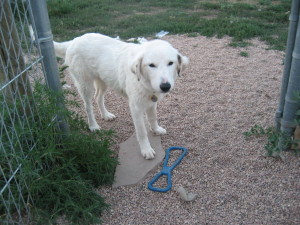In my last semester at my vet tech school, we reviewed toxicology in detail. I thought the whole time, how I wished I'd had this info before. I, for one, don't trust the internet too much. It was great learning it first hand, in class. Case in point, one day, we realized a tiny bottle of anti-freeze for our motorcycles managed to find itself left in the back yard. Not in a place we thought accessible to our dogs, but.. they found it. They found it, because it smells sweet and tastes even sweeter. Rat poison is like that too.. it's meant to seem attractive to the mice, so it's attractive to your pets. I about had a heart attack that night, when my boyfriend told me they wrangled off the lid. He caught them fresh in the act, and assured me that no one got more than 1 lick, if that. But, I had heard so many horror stories, so I kept checking my dogs all night for symptoms. When I learned the reality of the toxicity, i felt kinda stupid. Not stupid for my concern, but stupid that i wasted so much time freaked out over a potential lick.
When I finally took my class on the subject, I created this cheat sheet for my friends. It's not inclusive of toxic plants and veggies, but it addresses some other concerns. As a rule of thumb, always research all the flowers and plants which grow in your yard to exclude any potential toxins, and of course, never feed your dogs grapes, onions, or garlic. Grapes can cause kidney failure, and onions/garlic can cause hemolytic anemia. I don't have the lethal doses, but just keep them away!
In addition, if you are moving into a new house, patrol the garage and basement.. any other nooks where previous owners may have set out traps for rodents.
Veterinary Toxicology Quick Reference Guide
CHOCOLATE (Theobromine)
Milk chocolate contains 44 mg/oz Baking chocolate contains 390 mg/oz
Toxic dose 250-500 mg/kg.
Signs: anxious, muscle tremors, vomit/diarrhea, fast heart beat, abdominal pain, seizures, coma
PEST CONTROL/RODENTICIDES
Toxic dose 1.8 mg/kg cats 4-7 mg/kg dogs (all are extremely lethal and more lethal for newer formulas)
Signs: vomit/diarrhea, anorexia, difficulty walking, difficulty breathing, bloody stool, bruising, pale mucous membranes
ACETAMINOPHEN/TYLENOL
Toxic dose 50-60 mg/kg cats 150-200 mg/kg dogs. (Extremely lethal in cats!)
Signs: dog- lethargy, anorexia, vomiting, abdominal pain. Cat- vomiting, salivation, face & paw swelling, difficulty breathing, fast breathing, muddy/brown mucous membranes
LEAD: lead-based paints, bullets, batteries, fishing sinkers
Signs: anorexia, abdominal pain, seizures, difficulty walking, blindness, vomiting
ZINC: (pennies, vitamin supplements, desitin, baby rash ointments, some soaps, electronics)
Signs: vomiting, diarrhea, yellowing of mucous membranes
ETHYLENE GLYCOL (anti-freeze)
Lethal dose 1.5 ml/kg cat, 6.6 ml/kg dog
Signs: vomiting, difficulty walking “appears drunk”, lethargy, excess drinking/peeing, seizures, coma, fast breathing, fast heart beat (dogs can have these symptoms and then seem to improve but it’s not real)
XYLITOL (sugar substitute found in sugarless gum, diabetic candy, diet yogurt, chewable vitamins, baked goods)
Toxic dose: 0.15g/kg
Signs: weakness, depression, seizures, coma
Home methods to induce vomiting
*do not induce vomiting if your animal is having seizures, difficulty breathing, appears to not be getting enough oxygen (blue gums) or if known substance is caustic (acidic) Okay to induce for chocolate, anti-freeze, Xylitol, Tylenol, toxic plants, and rodenticides
Ipecac syrup (especially in cats) Oral administration
0.5 to 1 tsp per 10 lbs – dog, 1 tsp- cat
Hydrogen Peroxide 3% Oral administration
1 tsp/10 lbs by mouth; do not exceed 3 tbsp
(Kilograms are your animal’s weight in pounds divided by 2.2)
ANIMAL POISON CONTROL CENTER 1-888-4ANI-HELP (1-888-426-4435)




















































